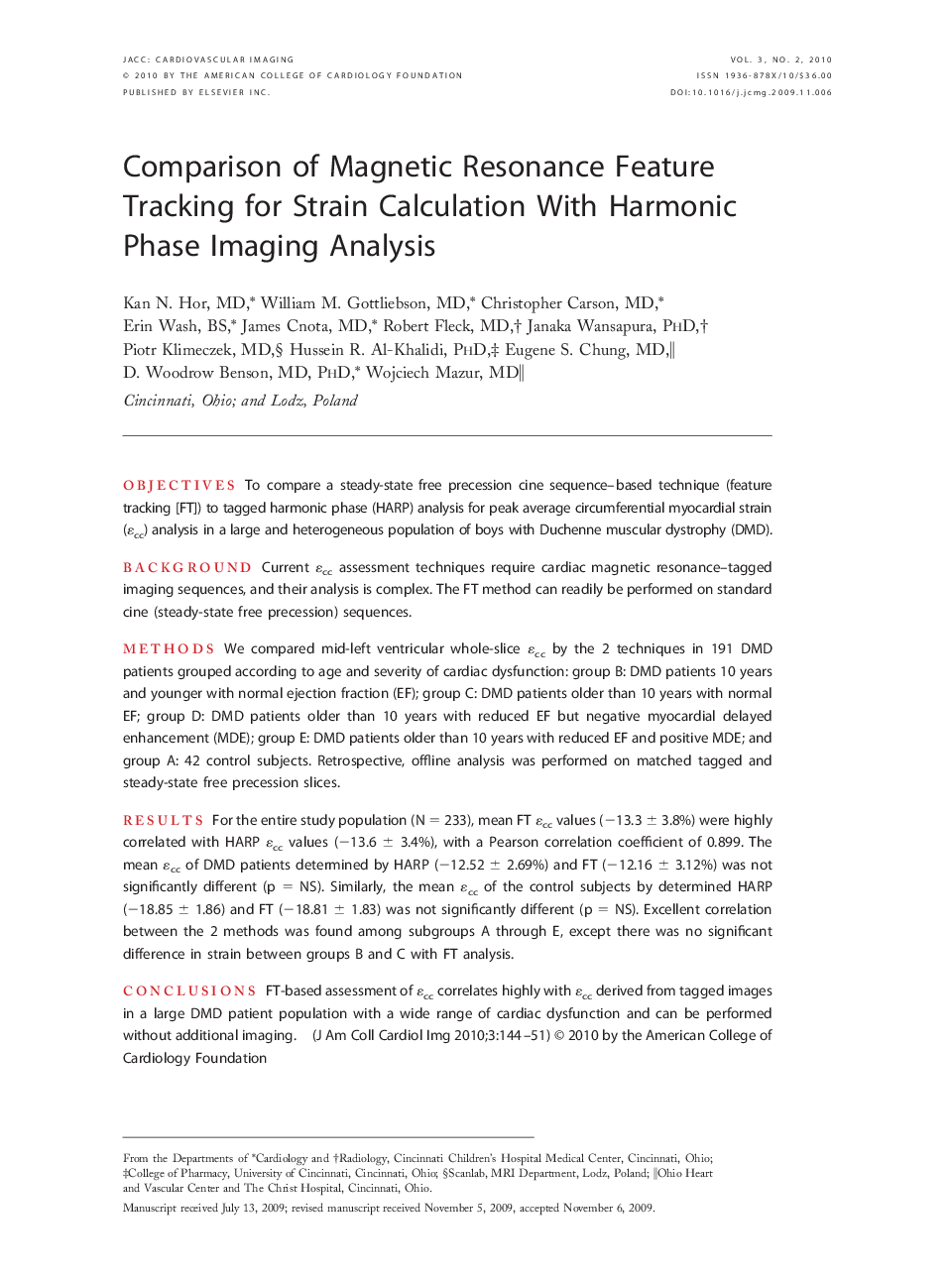| کد مقاله | کد نشریه | سال انتشار | مقاله انگلیسی | نسخه تمام متن |
|---|---|---|---|---|
| 2938998 | 1176967 | 2010 | 8 صفحه PDF | دانلود رایگان |

ObjectivesTo compare a steady-state free precession cine sequence–based technique (feature tracking [FT]) to tagged harmonic phase (HARP) analysis for peak average circumferential myocardial strain (εcc) analysis in a large and heterogeneous population of boys with Duchenne muscular dystrophy (DMD).BackgroundCurrent εcc assessment techniques require cardiac magnetic resonance–tagged imaging sequences, and their analysis is complex. The FT method can readily be performed on standard cine (steady-state free precession) sequences.MethodsWe compared mid-left ventricular whole-slice εcc by the 2 techniques in 191 DMD patients grouped according to age and severity of cardiac dysfunction: group B: DMD patients 10 years and younger with normal ejection fraction (EF); group C: DMD patients older than 10 years with normal EF; group D: DMD patients older than 10 years with reduced EF but negative myocardial delayed enhancement (MDE); group E: DMD patients older than 10 years with reduced EF and positive MDE; and group A: 42 control subjects. Retrospective, offline analysis was performed on matched tagged and steady-state free precession slices.ResultsFor the entire study population (N = 233), mean FT εcc values (−13.3 ± 3.8%) were highly correlated with HARP εcc values (−13.6 ± 3.4%), with a Pearson correlation coefficient of 0.899. The mean εcc of DMD patients determined by HARP (−12.52 ± 2.69%) and FT (−12.16 ± 3.12%) was not significantly different (p = NS). Similarly, the mean εcc of the control subjects by determined HARP (−18.85 ± 1.86) and FT (−18.81 ± 1.83) was not significantly different (p = NS). Excellent correlation between the 2 methods was found among subgroups A through E, except there was no significant difference in strain between groups B and C with FT analysis.ConclusionsFT-based assessment of εcc correlates highly with εcc derived from tagged images in a large DMD patient population with a wide range of cardiac dysfunction and can be performed without additional imaging.
Journal: JACC: Cardiovascular Imaging - Volume 3, Issue 2, February 2010, Pages 144–151